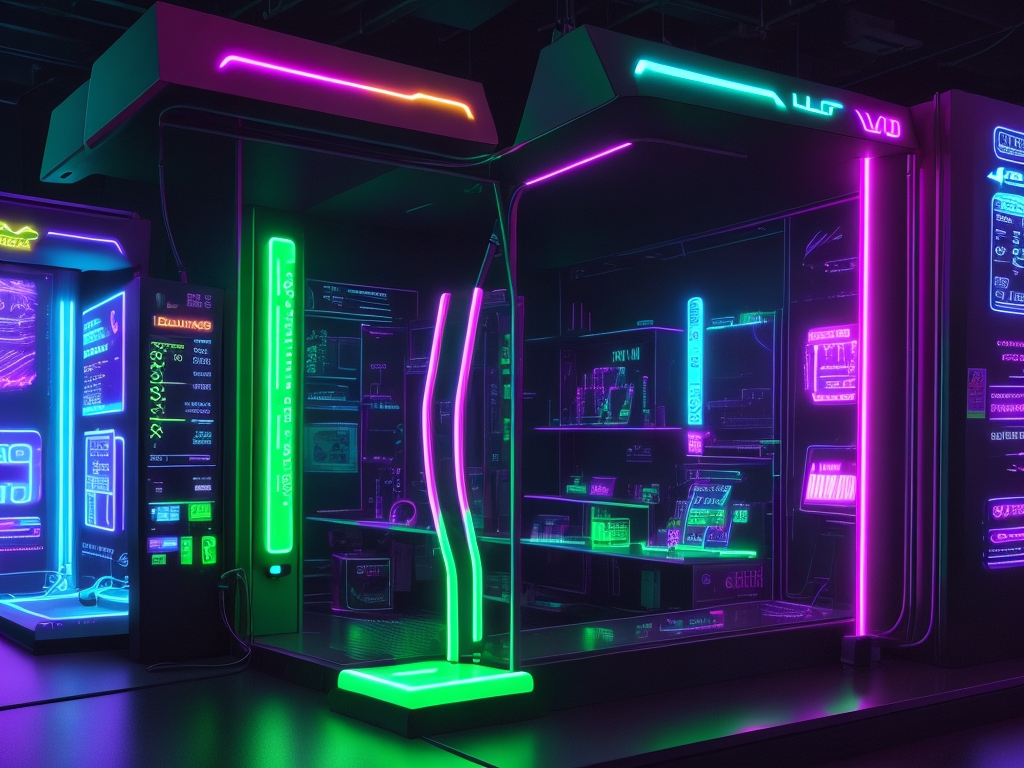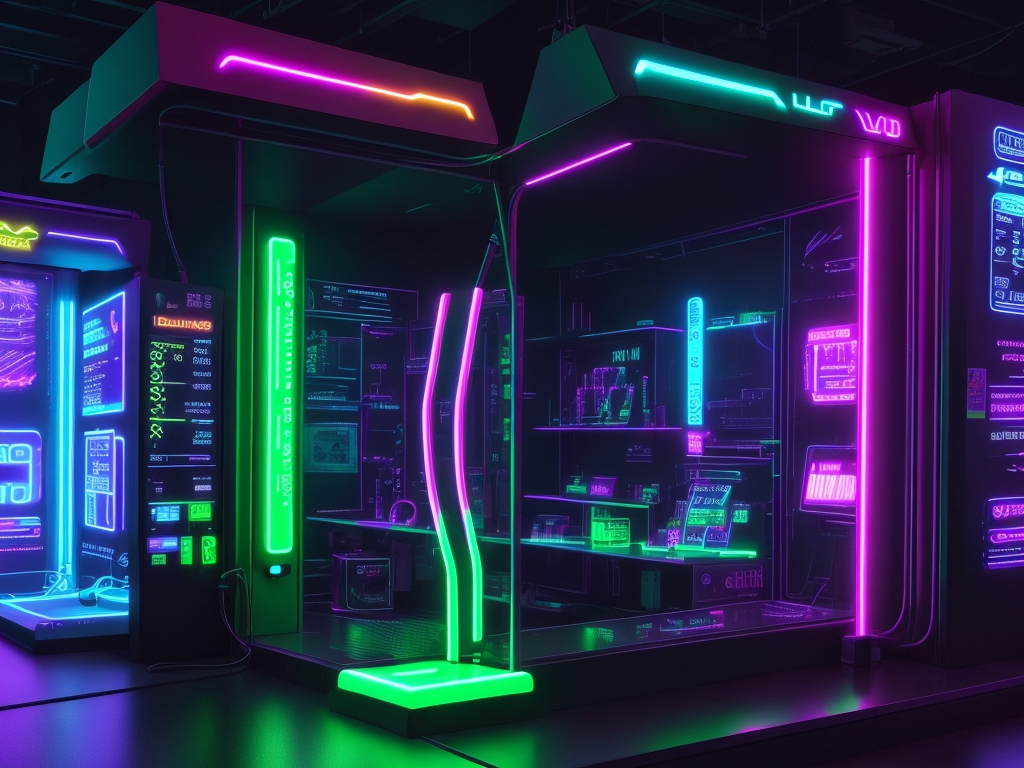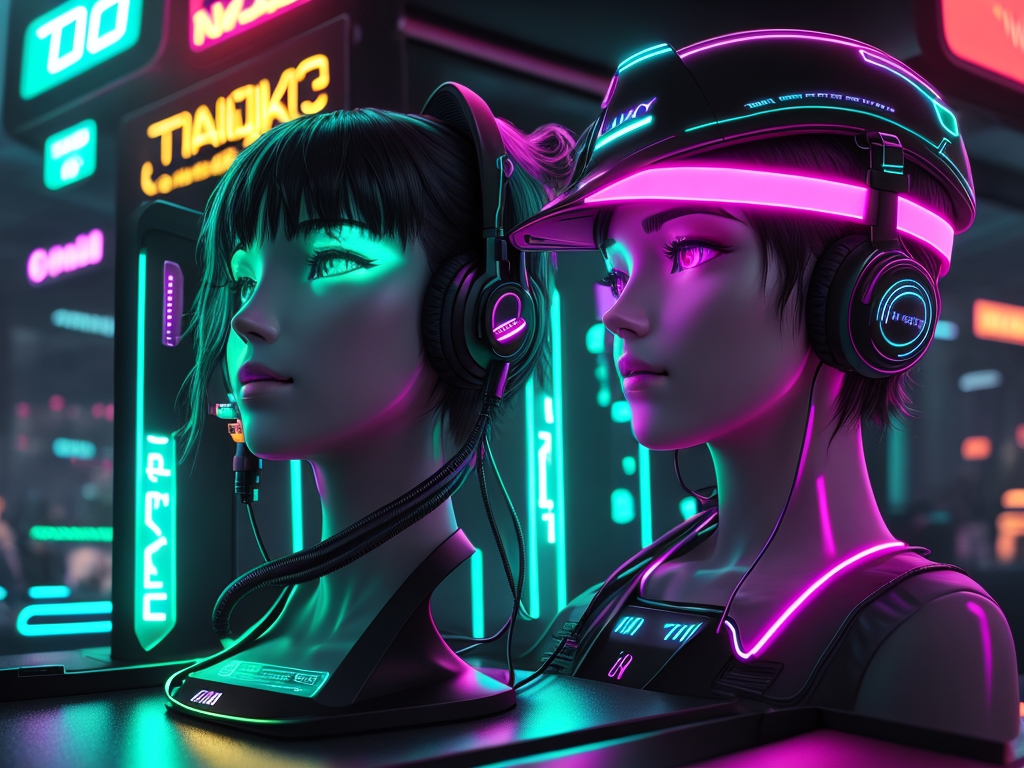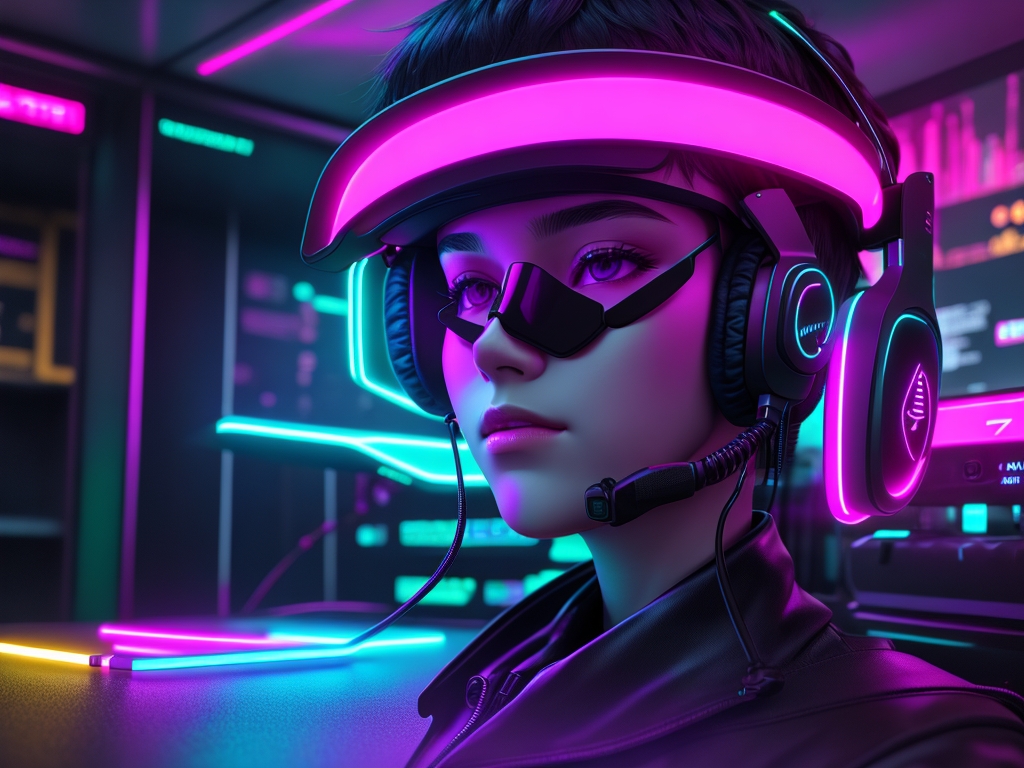What Are The 3 Types Of Virtual Reality?
Key Takeaways:
- Virtual reality can be categorized into three main types: non-immersive virtual environment, immersive virtual environment, and augmented reality.
- Non-immersive virtual world provides a realistic simulation of a real-world setting and is rated based on presence and sense of immersion.
- Cinematic VR is the most common type and presents movies or games in a 360° format, allowing users to move around and interact with the environment.
- Immersive virtual reality brings together multiple users in a 3D environment, enabling interaction between them and with the virtual world.
- VR aims to immerse users in a real-world environment to make them feel like they are in a real-world situation.
- There are three main types of VR: non-immersive, semi-immersive, and fully immersive.
- Some VR applications are highly immersive and can only be enjoyed individually or in small groups.
- Some VR applications combine different types of VR experiences.
- Multi-user VR experiences are popular, allowing users to interact with a virtual environment.
Introduction to Virtual Reality
Virtual Reality (VR) is a fascinating technology that has revolutionized numerous industries. In this introduction, we’ll embark on a journey to explore the world of VR, starting with a definition and explanation of this captivating concept. Furthermore, we’ll investigate the importance and impact of virtual reality, shedding light on how it is shaping various fields and enhancing our everyday lives. So, fasten your seatbelts and get ready to dive into the realm of VR.
Definition and Explanation of Virtual Reality
Virtual Reality (VR) produces a simulated world for users. Special equipment and tech help to create this computer-generated reality. It gives a feeling of being in that place.
Wearing headsets and goggles allow virtual scenes or images to be seen. This could be three-dimensional. Plus, other senses can be involved for an enhanced experience. Tracking the user’s movements allows the virtual environment to adjust.
VR can create new worlds or copy real-world environments in a digital space. This offers many possibilities such as gaming, education, training simulations, healthcare, architecture, and entertainment.
VR offers a way to make engaging and immersive experiences. It can replicate or construct virtual environments and enable users to be convincingly involved. This could revolutionize various parts of our lives.
Importance and Impact of Virtual Reality
Virtual reality (VR) is taking over! It has gained huge importance and made a big impact on many industries. It gives users a simulated experience with computer-generated environments, giving them a realistic and immersive feeling. VR has changed the way people interact with digital content and is used in gaming, education, healthcare, engineering, and entertainment.
The power of virtual reality lies in its ability to transport users to a different world. This immersive experience can boost learning and training by letting users practice skills in a safe environment. In healthcare, VR has been used for pain management, rehab exercises, and even surgical simulations. It also helps mental health treatments by providing exposure therapy for phobias and anxieties.
VR can transform entertainment too. Affordable and accessible headsets let consumers enjoy immersive gaming experiences. VR also creates new possibilities for artistic expression, allowing artists to create interactive virtual worlds.
Furthermore, virtual reality can revolutionize industries by improving productivity. Architects can use VR to visualize building designs before construction. In manufacturing processes, VR can be used for virtual prototyping and testing, which reduces costs. All in all, virtual reality is changing the future of industries and enhancing our experiences.

Overview of the Three Types of Virtual Reality
Virtual reality has revolutionized the way we experience digital environments. In this overview, we’ll explore the three types of virtual reality: non-immersive, semi-immersive, and fully immersive. Each type offers unique levels of immersion and interactivity, opening up endless possibilities for fields such as gaming, education, and healthcare. Let’s dive into the fascinating world of virtual reality and uncover the defining characteristics of each type.
Non-Immersive Virtual Reality
Non-immersive Virtual Reality (VR) is a more available and affordable choice when compared to other types of VR. You can take part in virtual activities without the need for more equipment or areas. This form of VR usually has augmented reality (AR) elements too, mixing virtual content with real-world scenarios.
Examples of non-immersive VR are smartphone-based VR through apps or games, plus desktop applications that create virtual settings. Non-immersive VR is used in education, training, entertainment, and marketing.
Definition and Characteristics of Non-Immersive VR
Non-Immersive VR is a type of virtual reality that does not fully submerge the user. Instead, devices such as headsets and screens are used to show computer-generated images or videos. This type of VR restricts mobility and interaction, not like semi-immersive or fully immersive VR.
HMDs (head-mounted displays) are frequently utilized to give visual stimulation to the user. They can display 2D or 3D images, creating a sense of presence in the virtual environment. Other tools, like handheld controllers or motion tracking systems, can be employed to amplify engagement.
Non-immersive VR is accessible and budget-friendly compared to other kinds of virtual reality. It does not need complicated technology or equipment. It can be accessed through common devices like smartphones, laptops, or desktops. This makes it available to a wide range of users for various industries.
Non-immersive VR is often used for training, simulations, education, entertainment, and marketing. In medical training, for example, it can simulate surgical procedures or patient interactions to teach healthcare professionals in a safe atmosphere. In architecture, it can be used to create virtual walkthroughs of buildings before they are made.
In conclusion, non-immersive VR provides a cost-effective solution for experiencing virtual environments. It has many applications in various industries. While it does not provide the same level of immersion, it still offers valuable opportunities for training, simulation, and interactive digital content creation.
Examples of Non-Immersive VR Experiences
Non-Immersive VR experiences are not as immersive as semi-immersive or fully-immersive VR. However, they still offer great opportunities to engage with virtual content.
Types of Non-Immersive VR Experiences:
- 1. 360-degree Videos: View an entire scene from every angle.
- 2. Virtual Tours: Explore virtual environments such as museums or architectural designs.
- 3. Virtual Desktops: Interact with your computer in a virtual environment.
- 4. Training Simulations: Practice skills or procedures in a simulated environment.
- 5. Virtual Meetings and Collaboration: Interact with others in a shared virtual space using avatars.
- 6. Education and Learning: Experience interactive and engaging educational content through virtual environments.
So, don’t miss out! Receive the real-ish but not too real experience of semi-immersive virtual reality.

Semi-Immersive Virtual Reality
Goggle up, ’cause Semi-Immersive VR is bringing you a wild journey into the digital realm! It’s more engaging than non-immersive VR, letting you explore and interact with virtual environs in a realistic way. You can still be aware of your physical surroundings, so manipulating objects, navigating spaces, and carrying out simulated activities is possible.
Applications for semi-immersive VR span various fields. For example, it can be used for training in aviation or medicine, to visualize architecture and design before construction, or to provide immersive distractions or simulated exercises in healthcare.
As technology continues to progress, interface design and device abilities will be improved, enhancing the user experience with semi-immersive VR. So, get ready to experience the balance between immersion and accessibility.
Definition and Features of Semi-Immersive VR
Semi-Immersive VR offers a unique type of virtual reality. It’s not as immersive as fully immersive VR but still more engaging than non-immersive VR.
Users can access these environments with head-mounted displays or large screens. They interact with them using controllers and motion tracking systems.
Semi-Immersive VR tracks user movements and inputs. This makes physical movements and interactions with objects more natural and intuitive.
And it stimulates multiple senses like audio, haptic and olfactory.
It’s a step up from non-immersive VR where users usually use keyboards and mice.
Haptic glove technology has advanced Semi-Immersive VR by adding a sense of touch.
Applications and Uses of Semi-Immersive VR
Semi-Immersive Virtual Reality is a type of VR that gives users a moderate level of interaction. It has elements of both non-immersive and fully immersive VR. Here are some applications and uses for this:
- Training and Simulations: Semi-immersive VR is used in training settings, such as military, medical and flight simulations. Individuals can practice skills in a safe environment.
- Education and Learning: It can be used to make learning more immersive and hands-on, like visiting virtual historical sites or doing interactive science experiments.
- Entertainment and Gaming: VR is embraced by the gaming industry, giving players a more realistic gaming experience. They can interact with virtual objects and navigate through virtual worlds.
- Architectural Design and Visualization: Architects and designers can use it to visualize their designs and make real-time adjustments.
- Virtual Meetings and Collaboration: It allows remote collaboration, bringing people together in a shared virtual space.
- Therapy and Rehabilitation: Semi-immersive VR has shown promise in healthcare, as a tool for therapy and rehabilitation.
Fully immersive VR offers an intense experience, but semi-immersive VR gives a balance between immersion and accessibility. It offers an engaging environment without needing lots of equipment or complete isolation. It’s versatile and useful in training, education, entertainment, design, remote collaboration and for healthcare. It has potential to improve learning, training outcomes and enable collaboration. Dive into a new world with Fully Immersive Virtual Reality!
Fully Immersive Virtual Reality
Text:
Fully Immersive Virtual Reality is a game-changing tech that has transformed various industries. By immersing users in virtual environments, it has been used in gaming, training simulations, and even therapy. Advanced technologies like head-mounted displays and motion tracking help create a realistic and immersive virtual world.
In gaming, Fully Immersive Virtual Reality allows players to completely submerge themselves in virtual worlds. They can interact with game elements, explore virtual landscapes, and experience thrilling adventures.
But this tech goes beyond gaming. In aviation, healthcare, and military, training simulations with Fully Immersive Virtual Reality have become invaluable. Trainees can practice scenarios in a safe and managed virtual setting, so they’ll be ready for real-world challenges. This tech also shows potential in therapeutic settings, allowing individuals to safely face their fears and conquer phobias through exposure therapy.
To ensure the best immersive experience, equipment and space must be properly set up when using Fully Immersive Virtual Reality. Specialized equipment and enough space for movement are essential. With proper setup, the tech can deliver an unbeatable immersive experience.

In summary, Fully Immersive Virtual Reality has revolutionized industries with its virtual world-transporting ability. It offers an immersive experience that engages all senses, and as tech advances, more and more exciting developments in this field can be expected.
Definition and Key Elements of Fully Immersive VR
Fully Immersive Virtual Reality (VR) is a way of providing an interactive experience. Advanced technology and equipment create a sensory-rich environment and engulfs the user in a virtual world. To achieve this, users wear head-mounted displays which cover their eyes and ears. High-resolution screens and built-in speakers or headphones deliver stunning visuals and audio. Additionally, motion tracking technology allows users to move within the virtual environment. To further enhance the sense of immersion, motion controllers and haptic devices are used. These provide physical feedback allowing users to interact with virtual objects. This combination of elements creates a deeply immersive experience.
Fully immersive VR has many uses, such as gaming, entertainment, and education. It can also be used for pain management therapy, architectural visualization, and training simulations. With more advancements in technology and greater accessibility, fully immersive VR is expected to make a lasting impact across industries. You can even use it to get away from boring family gatherings!
Equipment and Technology Required for Fully Immersive VR
Fully immersive virtual reality (VR) requires particular equipment and technology to provide users with a realistic and engaging environment. These pieces work together to create a sensation of presence.
- Head-mounted display (HMD): Worn on the head, HMDs usually include a high-resolution screen that shows the virtual world.
- Tracking system: To accurately register the user’s movements in the virtual space, an infrared or camera-based tracking system is necessary.
- Input devices: Special input devices are used to interact with the virtual environment. These can include motion capture systems, handheld controllers, or full-body tracking suits.
- Audio systems: Audio systems enhance the sense of presence in VR. High-quality headphones or speakers offer spatial audio, simulating sounds from different directions.
- Powerful computer hardware: Powerful computer hardware is needed to render high-resolution graphics and run complex simulations.
- Software platforms and development tools: Content for fully immersive VR experiences is created with software platforms and development tools. These enable developers to design interactive environments, program elements, and optimize performance.
Haptic feedback devices and locomotion systems may further enhance the immersion in fully immersive VR experiences. To make the user experience optimal, developers must innovate and advance these technologies. This includes better display resolution, shorter latency, advanced input devices, and more realistic audio and haptic feedback.
Fully immersive VR takes you to another world, without having to leave your house!
Applications and Benefits of Fully Immersive VR
Text:
Fully immersive Virtual Reality (VR) is an incredible tech! It brings users into a virtual environment, giving them an ultra-realistic experience. This type of VR provides the highest level of interactivity, letting users engage with the virtual world just like reality.
The applications and benefits of fully immersive VR are broad and varied. One use is in the field of training and simulation. Industries such as aviation, healthcare, and military use this technology to give realistic training experiences without physical equipment or putting people in danger. For example, pilots can do virtual flight simulations that mimic real-world scenarios. This allows them to practice emergency procedures and increase their skills in a safe and regulated atmosphere.
Another extraordinary benefit of fully immersive VR is for entertainment and gaming. With this tech, users can fully dive into virtual worlds, interacting with characters and objects as if they were there. This creates an interactive and engaging gaming experience, increasing the level of fun and user satisfaction.
Likewise, fully immersive VR has great applications in architecture and design. Architects can use this tech to create virtual models of buildings, allowing clients to explore and interact with their designs even before construction starts. This helps clients envision the final product and helps architects find any flaws or design improvements in the early stages.
It should be noted that there are 3 types of virtual reality: non-immersive, semi-immersive, and fully immersive. Each offers different levels of escapism and potential for embarrassment.
In conclusion, the applications and advantages of fully immersive VR are numerous and varied. From training and simulation to entertainment and gaming, and even architecture and design, this technology is changing various industries and improving experiences for users.
Comparison of the Three Types of Virtual Reality
When comparing the three types of virtual reality, we can focus on key factors that differentiate them. From cost and accessibility to realism and immersion, and equipment and technology requirements, each sub-section will shed light on the distinct characteristics of these virtual reality experiences. Furthermore, exploring the potential applications and industries where these technologies find relevance will showcase their unique capabilities. So, let’s dive into the realm of virtual reality and see how these three types stack up against each other.

Cost and Accessibility
Virtual Reality (VR) gives people realistic virtual worlds. Computers create these for users, giving them thrilling experiences. Cost and accessibility to different types of VR must be taken into account.
Non-immersive VR is usually the least expensive. This involves interacting with virtual places on a computer or mobile device. Examples include video games, virtual tours, and educational activities.
Semi-immersive VR is more immersive. Headsets and motion controllers follow movement and let users interact with the virtual world realistically. It is more costly than non-immersive VR, but more accessible.
Fully immersive VR offers the most realistic experience. Special equipment is needed, like head-mounted displays, motion capture systems, and haptic feedback devices. This is expensive, so it is mainly used in professional settings, such as aerospace simulation, healthcare training, and research.
Non-immersive VR is the cheapest and most accessible, as it only requires computers and mobile devices. Semi-immersive VR needs special equipment, while fully immersive VR needs sophisticated hardware. However, technology is becoming more affordable. This could mean semi-immersive or fully immersive VR becomes more available to more people, leading to more widespread use of VR across many industries.
Realism and Immersion
Realism and immersion are two must-haves for a compelling virtual reality experience. Achieving realism involves creating graphics, textures, and animations that look like real life. Small details can help increase the sense of presence in the virtual environment. Lighting and other physics simulations are also important.
On the other hand, immersion is achieved through head-mounted displays (HMDs) and tracking systems. Audio integration gives users the feeling of being present. When all these elements come together, it creates a believable alternate reality.
Technology keeps pushing the boundaries of realism and immersion, so future virtual reality experiences will be even more realistic and immersive.
So, are you ready to venture into a new world?
Equipment and Technology Requirements
Virtual Reality (VR) demands special equipment and technology to craft total experiences. These needs differ based on the type of VR employed, such as non-immersive, semi-immersive, or fully immersive VR. The following table summarises the equipment and technology required for each type of VR:
| Type of VR | Equipment and Technology Requirements |
| Non-Immersive VR | Uses a computer monitor or screen, input devices like a keyboard and mouse, and software that generates virtual environments. |
| Semi-Immersive VR | Requires more advanced equipment, such as head-mounted displays (HMDs) or projectors, tracking systems for user movement, and audio systems for sound immersion. |
| Fully Immersive VR | Involves the use of high-end HMDs that provide a wide field of view and high-resolution displays. It also requires powerful computers or gaming consoles to generate detailed virtual environments in real-time. |
In addition to these, shared elements include sensors and tracking devices to record user movements, controllers for involvement with the virtual world, and software frameworks or game engines for seamless integration of visuals and sounds.
The equipment and technology requirements for each type of VR are designed to create more and more immersive experiences. Non-immersive VR could be easier to access and more affordable because of its basic setup. Semi-immersive VR brings more realistic visuals and sound immersion but may demand more space and expenditure in hardware. Fully immersive VR gives the most realistic experience but requires costly hardware setups.
As technology progresses, we can expect further improvements in equipment design, lowering costs while raising the degree of immersion. Possible inventions could include wireless VR systems, eye-tracking technology, and enhancements in haptic feedback devices to add a sense of touch in virtual environments. These developments will keep changing the equipment and technology requirements, making VR more available and effective for different industries.
By understanding the individual characteristics of each type of VR and staying updated on novel technologies, individuals and businesses can pick the most suitable equipment and technology setup that fits their objectives and allows them to totally engage in immersive virtual experiences.
Potential Applications and Industries
VR technology can create immersive and realistic experiences. Let’s explore its potential applications and industries!
For example, in healthcare, VR can be used for surgical simulations and pain management. Education can benefit from virtual field trips and language acquisition. Architecture can use virtual walkthroughs of designs. Gaming can enjoy immersive gaming experiences. Tourism can offer virtual tours. The military can use combat training simulations.
Other industries such as automotive manufacturing, retail, engineering, and sports are also exploring the use of VR technology. Remote collaboration and teleconferencing for businesses are potential uses too.
When thinking about how to apply VR tech, it’s important to assess the specific needs and requirements of each sector. Understanding how VR can make existing processes better or create new opportunities is key.
Now, let’s get ready to explore the exciting world of virtual reality!
Future Trends and Innovations in Virtual Reality
As virtual reality continues to evolve, this section explores the exciting future trends and innovations in this immersive technology. From advancements in interface design and devices to the development of haptic glove technology, we’ll delve into how virtual reality is revolutionizing the way we interact with digital environments. Additionally, we’ll discuss the profound impact of virtual reality on various industries, paving the way for new possibilities and experiences. The future of virtual reality is poised for remarkable growth and transformation.
Advancements in Interface Design and Devices
Advancements in interface design and devices are ongoing. These are improvements and innovations to make VR more intuitive and immersive. For example, motion controllers and haptic gloves allow users to have a natural and tactile experience in virtual reality. User interfaces have also become more user-friendly and intuitive. This includes 3D menus, gesture-based controls, and voice recognition technology.
VR experiences are now available on various platforms from gaming computers to standalone headsets like the Oculus Quest. This allows a wider range of users to experience VR, without needing expensive equipment or technical knowledge.
Pro Tip: To provide a cutting-edge and engaging VR experience, stay up-to-date with advancements in interface design and devices. Haptic glove technology takes VR to a whole new level by allowing you to feel the virtual worlds.
Haptic Glove Technology and Adding a Sense of Touch
Haptic glove technology is a revolutionary new way to experience virtual reality. Special gloves, containing sensors and actuators, give users a sense of touch. This enhances the realism and immersion of virtual reality.
Sensors detect the movement and position of users’ hands. Actuators provide tactile feedback, recreating textures and physical interactions. This allows users to feel the shape, weight and even temperature of virtual objects.
This tech has many applications. For example, healthcare uses it for surgical training. Gaming and entertainment use it to enhance player immersion. Automotive and industrial design also benefit from it. It allows for virtual prototyping and testing before committing resources to production.
Impact of Virtual Reality on Different Industries
Virtual Reality has had a major effect on different industries. It has changed the way businesses connect with their customers. The gaming industry has seen great gains from VR. Gamers can now enter virtual worlds and have an even more realistic experience. This leads to more engagement and enjoyment for gamers, and new ideas for game creators.
Healthcare is another sector that has been impacted by virtual reality. It has been used in medical training and education to help medical staff practice operations and procedures in a safe and controlled environment. This has improved medical proficiency and patient results. VR has also been used to treat mental health problems like phobias and PTSD.
The industrial world has also been affected by virtual reality. It’s been used for workers in areas such as manufacturing, building, and aviation to train. They can practice their skills in a realistic virtual atmosphere. This not only makes workplaces safer, but it also increases efficiency and productivity.
Conclusion: The Potential of Virtual Reality and Its Impact on Society
Virtual reality has great potential and could hugely impact society. It is divided into 3 types: non-immersive, semi-immersive, and fully immersive. Each offers its own experience and uses.
Non-immersive VR requires a screen, such as a computer or TV. It provides basic immersion but no physical interaction. This is usually used in gaming and simulations.
Semi-immersive VR uses head-mounted displays and motion sensors. It lets people feel more present and interact with virtual environments more. Industries like healthcare, education, and architecture are exploring this type for training, research, and visualization.
Fully immersive virtual reality completely changes the real world for a virtual one. People wear headsets that track their movements and let them interact with the virtual world. It is being extensively used for gaming, entertainment, and even therapy.
Virtual reality could revolutionize many industries, like healthcare, education, architecture, and entertainment. Medical training and surgeries can use VR simulations. Virtual classrooms can improve education with immersive learning. Architects can use it to showcase designs and explore structures. Plus, VR can offer a whole new level of entertainment, allowing people to experience unbelievable scenarios and adventures.
VR technology is becoming more accessible and affordable. It is important for individuals, businesses, and organizations to use this technology to stay current and make use of the opportunities it brings.
Five Facts About the 3 Types of Virtual Reality:
- ✅ Virtual reality can be categorized into three main types: non-immersive virtual environment, immersive virtual environment, and augmented reality. (Source: [arvredtech.com](https://arvredtech.com/blogs/news/what-are-3-types-of-virtual-reality-virtual-reality-on-education))
- ✅ Non-immersive virtual reality provides a realistic simulation of a real-world setting and is rated based on presence and sense of immersion. (Source: [arvredtech.com](https://arvredtech.com/blogs/news/what-are-3-types-of-virtual-reality-virtual-reality-on-education))
- ✅ Cinematic VR is the most common type and presents movies or games in a 360° format, allowing users to move around and interact with the environment. (Source: [arvredtech.com](https://arvredtech.com/blogs/news/what-are-3-types-of-virtual-reality-virtual-reality-on-education))
- ✅ Immersive virtual reality brings together multiple users in a 3D environment, enabling interaction between them and with the virtual world. (Source: [arvredtech.com](https://arvredtech.com/blogs/news/what-are-3-types-of-virtual-reality-virtual-reality-on-education))
- ✅ Some VR applications combine different types of VR experiences, and multi-user VR experiences are popular, allowing users to interact with a virtual environment. (Source: [arvredtech.com](https://arvredtech.com/blogs/news/what-are-3-types-of-virtual-reality-virtual-reality-on-education))







